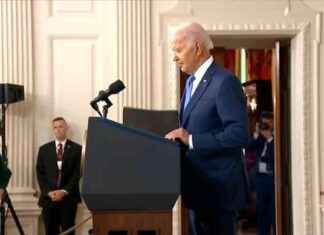Last month, the U.S. labor market was tight as employers struggled with finding people to staff factories, wait tables and guard swimming pools.
According to the Labor Department, U.S. companies added 390,000. Jobs in May according to Friday’s report. The unemployment rate remained at 3.6%. Total 22,000 jobs were lost in job gains between March and April.
Loading…
Holiday World and Splashin’ Safari, both in Santa Claus, Ind. hire approximately 2,200 seasonal workers during the summer. However, this year’s parks have only about 30% of that number.
Matt Eckert, president and CEO of the parks, said that they are not in panic. He said that the parks have staff members who work all year to fill in the gaps. “I’ve made my fair share of pizzas. I have made my fair share of funnel cakes. We get in there and do everything we can to ensure that the job gets done.”
This year’s shortage of lifeguards and ride operators is making it difficult for parks to offer a $1,000 bonus.
Eckert is hopeful that more teachers and students will apply for summer jobs after the school year ends. This could be the most competitive job market for teenagers in more than a decade.
Last month, 16,000 people gained employment in the entertainment and recreation industries, including amusement parks.
Loading…
Employers are hoping that older workers who quit the workforce during the pandemic will return to the workforce. This is especially true after the recent decline in the stock market.
Tim Fiore, who conducts monthly surveys of manufacturing managers for the Institute for Supply Management says that factories had a greater success in filling jobs this May than they did the previous month. They still struggle with high turnover.
Factories added 18,000 jobs during May.
Loading…
Fiore states that there is improvement, but still a lot of work to be done. “I think it will be a long slog on the employment side because there isn’t enough labor.”
Last month saw a 330,000 worker increase in the labor force, but not at the same pace as the rate of hiring.
Employers have offered more flexibility, better benefits, and higher wages to attract workers. The average hourly wage in May was 5.2% more than one year ago aEUR”, a slight decrease from the previous month.
Even those with larger paychecks can’t keep up with the rising costs.
The Federal Reserve is worried that inflation could be fueled by rising wages. Inflation is at 8.3% in May. This is a level that has been seen for the past four decades.
In an attempt to regain price control, the central bank began raising interest rates aggressively. In May, the Fed increased rates by half a point. In June and July, two more rate increases of similar size are expected.
Larry Summers, former Treasury Secretary, is skeptical that the Fed can curb inflation without triggering recession and the higher unemployment it brings.
Summers stated this week in an interview online with The Washington Post that he doesn’t believe there is a lasting reduction in inflation without a significant reduction in wage growth. “And with the labor market being so tight right now, I don’t see such a significant reduction in wage growth.”
Although the construction industry is usually the first to feel the impact of rising interest rates in general, it was not evident in the May employment report. Last month, 36,000 construction jobs were added by companies.
Freddie Mac reports that the average 30-year fixed mortgage rate this week was 5.09% aEUR”, slightly lower than last week, but more than 2 percentage point higher than last year.
Retail was the weakest spot in the jobs report with nearly 61,000 job losses in May.








